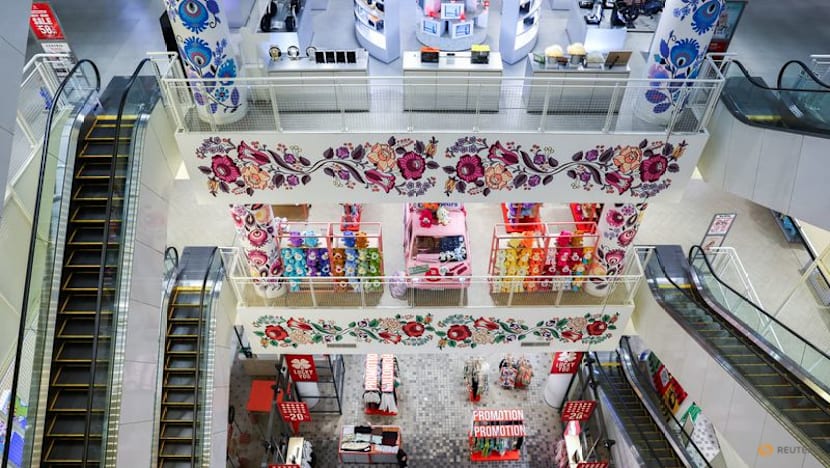Thai economy improves in September but slows in third quarter

A general view inside a shopping mall in Bangkok, Thailand, June 20, 2025. REUTERS/Chalinee Thirasupa
BANGKOK :Thailand's economy improved in September from the previous month due to a rebound in manufacturing, rising exports and increasing foreign tourism receipts, but it was weaker over the entire July to September quarter, the central bank said on Friday.
Domestic demand also slowed over the month, with both private consumption and investment showing declines, the Bank of Thailand said in a statement.
Exports, a key driver of the economy, jumped 19.2 per cent in September from a year earlier while imports increased 18.0 per cent, the central bank said, leading to a trade surplus of $3.6 billion.
The current account surplus THCURA=ECI was $1.9 billion in September.
For the whole of the third quarter, the economy softened compared to the previous quarter after a decline in manufacturing output, reflecting temporary production halts in certain products, as well as weaker domestic demand, the central bank said.
The central bank had earlier forecast year-on-year growth of 1.5 per cent in the third quarter and a 0.5 per cent dip compared to the previous three months. Third-quarter gross domestic product data is due on November 17.
The central bank forecast economic growth of 2.2 per cent this year and 1.6 per cent next year. Southeast Asia's second-largest economy expanded 2.5 per cent last year, lagging peers.
The central bank unexpectedly left its key rate unchanged at 1.50 per cent. Governor Vitai Ratanakorn earlier said rates could be cut if needed to lift inflation and growth. The next policy review is due on December 17.
The economy has struggled with U.S. tariffs, high household debt, and a strong baht currency, prompting the government to introduce a series of stimulus measures, including a 44 billion baht ($1.34 billion) consumer subsidy programme.
On Thursday, the finance ministry raised its 2025 GDP growth forecast to 2.4 per cent from 2.2 per cent and predicted 2 per cent growth next year.













